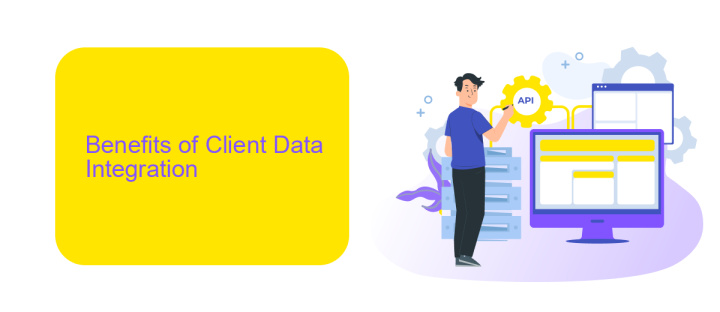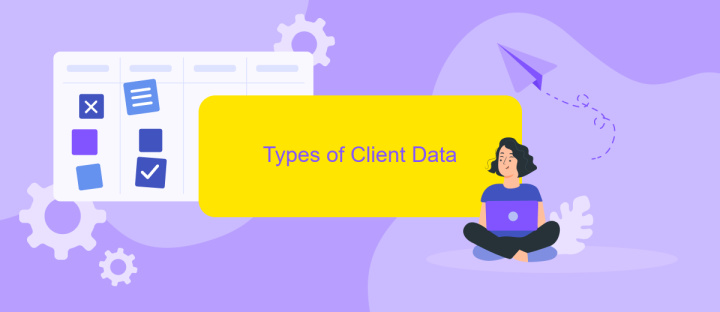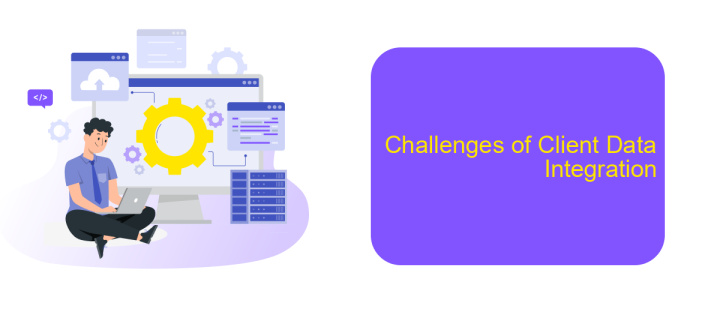Client Data Integration
Client Data Integration is a crucial aspect of modern business operations, enabling organizations to unify and streamline disparate data sources for a comprehensive view of customer information. By integrating client data, companies can enhance decision-making, improve customer experiences, and drive operational efficiency. This article explores the key benefits, challenges, and best practices for successful client data integration.
Introduction
Client Data Integration is an essential process for businesses looking to streamline their operations and enhance customer experiences. By consolidating data from various sources, companies can gain a comprehensive view of their clients, enabling more informed decision-making and personalized service delivery.
- Improved data accuracy and consistency
- Enhanced customer insights and segmentation
- Streamlined business processes
- Increased operational efficiency
One of the tools that facilitate seamless client data integration is ApiX-Drive. This service allows businesses to connect various applications and automate data transfer between them, reducing manual effort and minimizing errors. By leveraging ApiX-Drive, companies can ensure that their client data is always up-to-date and readily accessible, driving better business outcomes.
Benefits of Client Data Integration

Integrating client data offers numerous advantages that can significantly enhance business operations and customer satisfaction. By consolidating data from various sources, companies gain a comprehensive view of their clients, allowing for more personalized and effective marketing strategies. This holistic approach not only improves customer engagement but also aids in making informed business decisions, optimizing resource allocation, and identifying new market opportunities.
Moreover, client data integration streamlines workflows and reduces operational inefficiencies. Utilizing services like ApiX-Drive can automate the integration process, ensuring seamless data synchronization across multiple platforms. This not only saves time but also minimizes the risk of errors associated with manual data handling. As a result, businesses can focus more on their core activities, driving growth and innovation while maintaining a high level of data accuracy and consistency.
Types of Client Data

Client data is a crucial asset for businesses aiming to understand and serve their customers better. It can be categorized into several types, each serving a unique purpose in the integration process.
- Personal Data: Includes names, addresses, phone numbers, and email addresses. This data helps in personalizing customer interactions and communications.
- Transactional Data: Encompasses purchase history, payment details, and transaction dates. It is essential for tracking customer behavior and sales trends.
- Behavioral Data: Covers online activities, such as website visits, clicks, and social media interactions. This type of data is valuable for targeted marketing and improving user experience.
- Demographic Data: Consists of information like age, gender, income level, and education. It aids in segmenting the market and tailoring marketing strategies.
Integrating these diverse data types can be complex, but services like ApiX-Drive simplify the process. ApiX-Drive allows seamless data integration from various sources, ensuring that businesses can leverage their client data effectively for enhanced decision-making and customer satisfaction.
Challenges of Client Data Integration

Client data integration presents several challenges that organizations must navigate to ensure seamless and efficient processes. One primary issue is the inconsistency of data formats across various sources, which can lead to difficulties in merging and analyzing data accurately. Additionally, data privacy and security concerns are paramount, as integrating client data often involves sensitive information that must be protected from breaches and unauthorized access.
Another significant challenge is the real-time synchronization of data. Businesses need up-to-date information to make informed decisions, but integrating data from multiple sources in real-time can be technically complex and resource-intensive. Furthermore, the lack of standardized APIs across different platforms can hinder the ease of integration, requiring custom solutions that can be costly and time-consuming.
- Inconsistent data formats
- Data privacy and security concerns
- Real-time data synchronization
- Lack of standardized APIs
Services like ApiX-Drive can help mitigate these challenges by providing a platform that simplifies the integration process. ApiX-Drive offers automated data synchronization and supports a wide range of applications, making it easier for businesses to integrate client data efficiently while maintaining high standards of security and accuracy.
- Automate the work of an online store or landing
- Empower through integration
- Don't spend money on programmers and integrators
- Save time by automating routine tasks
Best Practices for Client Data Integration
To achieve seamless client data integration, it is essential to establish a clear data governance framework. This involves setting standardized protocols for data collection, storage, and sharing. Start by defining data ownership and access rights to ensure that only authorized personnel can handle sensitive information. Regularly update and audit your data governance policies to comply with evolving regulations and maintain data integrity. Additionally, adopt robust data validation techniques to minimize errors and discrepancies during data transfer processes.
Leveraging automated tools like ApiX-Drive can significantly streamline the integration process. ApiX-Drive allows for easy connection between various platforms, enabling real-time data synchronization without manual intervention. This not only enhances operational efficiency but also reduces the risk of human error. Ensure that your integration solution supports scalable and flexible API connections to accommodate future growth and changes in your business environment. Regularly monitor and test your integrations to identify and resolve any issues promptly, ensuring continuous and reliable data flow.
FAQ
What is Client Data Integration?
Why is Client Data Integration important?
What are the common challenges in Client Data Integration?
How can businesses automate Client Data Integration?
What should businesses consider when choosing a Client Data Integration solution?
Time is the most valuable resource in today's business realities. By eliminating the routine from work processes, you will get more opportunities to implement the most daring plans and ideas. Choose – you can continue to waste time, money and nerves on inefficient solutions, or you can use ApiX-Drive, automating work processes and achieving results with minimal investment of money, effort and human resources.


